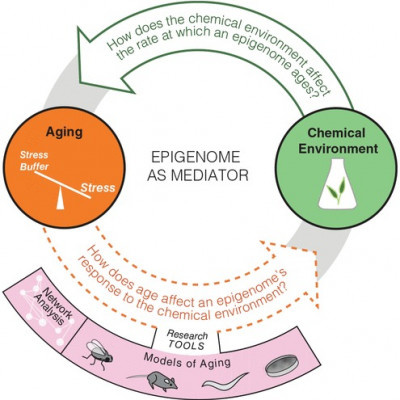
We live in a complex chemical environment where there are an estimated 350,000 chemical compounds or mixtures commercially produced. A strong body of literature shows that there are time points during early development when an organism’s epigenome is particularly sensitive to chemicals in its environment. What is less understood is how gene-environment and epigenetic-environment interactions change with age. This question is bidirectional: (1) how do chemicals in the environment affect the aging process and (2) how does aging affect an organism’s response to its chemical environment? Led by ISG faculty Patrick Allard, researchers at the UCLA Allard Lab use the model system C. elegans to dissect the interplay between aging and environmental exposure and how the epigenome may play an important role as a mediator between them.


